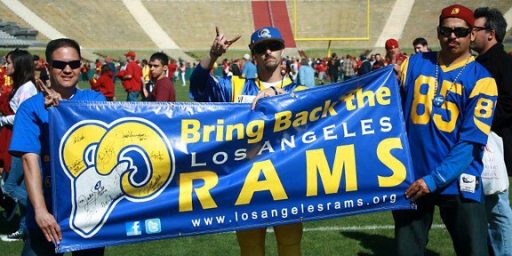Columns That Refute Themselves
Rick Gosselin of the Dallas Morning News is a must-read for NFL fans, always offering sharp insights into the game garnered over decades of experience. But, like anyone else, he can develop silly theories from anecdotal evidence.
Rick Gosselin of the Dallas Morning News is a must-read for NFL fans, always offering sharp insights into the game garnered over decades of experience. But, like anyone else, he can develop silly theories from anecdotal evidence.
His most recent column offers two examples.
First, he begins with a staggering statistic:
There have been 45 interceptions returned for touchdowns league-wide this season. Teams scoring them have won a staggering 91.1 percent of those games (41-4). There have been 14 fumbles returned for scores this season. Those teams are winning at a 71.4 percent clip (10-4).
He goes deep into the archives to reinforce his point:
Since 2000, there have been 799 interceptions and fumbles returned for touchdowns in the NFL. Defenses scoring them have won 74.7 percent of the games. When New England has scored a defensive touchdown in the last decade, the Patriots have won 79.4 percent of the time (27-7).
The problem with this is that direct scores off turnovers are relatively rare, so they don’t offer much predictive value.
You know who has the most TDs off turnovers this year? The 4-9 Arizona Cardinals, with 5. They have more TDs off turnovers than wins!
The 11-2 New England Patriots are next, with 4. But, given that they’ve won 7 more games than they have TDs off of turnovers, I’m guessing other factors help explain their win total.
Another seven teams are tied with 3 apiece: Baltimore (9-4), Cleveland (5-8), Dallas (4-9), Indy (7-6), Pittsburgh (10-3), San Diego (7-6), and Tampa Bay (8-5). Wins and defensive scoring is pretty poorly correlated here.
Now, I don’t have the time or inclination to delve into these on a game-by-game basis. Maybe the wins by the poor teams and losses by the good teams are directly attributable to flukey defensive scores. And, obviously, there are games when both teams score off turnovers, which presumably cancels out the effect.
I’m also amused by this bit from his regular Commish for a Day feature:
If and when an NFL team relocates to Los Angeles, I would demand that team leave the marks, logos and colors of the franchise in the city it departs. If it’s the Vikings, the nickname, logos and purple and gold color scheme would remain with the city of Minneapolis. The same with the Chargers. If they leave San Diego, the nickname, logos and powder blue color scheme must all stay.
[…]
Frankly, the next NFL team in Los Angeles should be called the Rams. But the NFL already fumbled that one away by letting Georgia Frontiere take the nickname, colors and logos to St. Louis when she moved the team in 1995.
Now, I actually agree with this as a general policy. But I’d note that the Chargers actually began their history as the Los Angeles Chargers in the old AFL. Granted, they only remained there a year and have been in San Diego since 1961. But there’s a rationale for calling them the LA Chargers. And, while I, too, still sometimes think of the LA Rams when I see that uniform, the team actually began as the Cleveland Rams in 1936 and won a championship their in 1945 before moving to LA the next year.






What you’re describing is the dark side of the statistical revolution. While DVOA and all the other advanced statistics have done wonders for the game, and understanding of it, it’s impossible not to notice that some writers rely on them too heavily (Football Outsiders, I’m looking at you). Just as the old-school scouts have been criticized for relying too heavily on things they can’t measure, I think that some of the new stats geeks are relying too heavily on what they can. As a professor of mine once said with regard to cost-benefit analysis, “Never confuse what is easily measurable with what is important.”